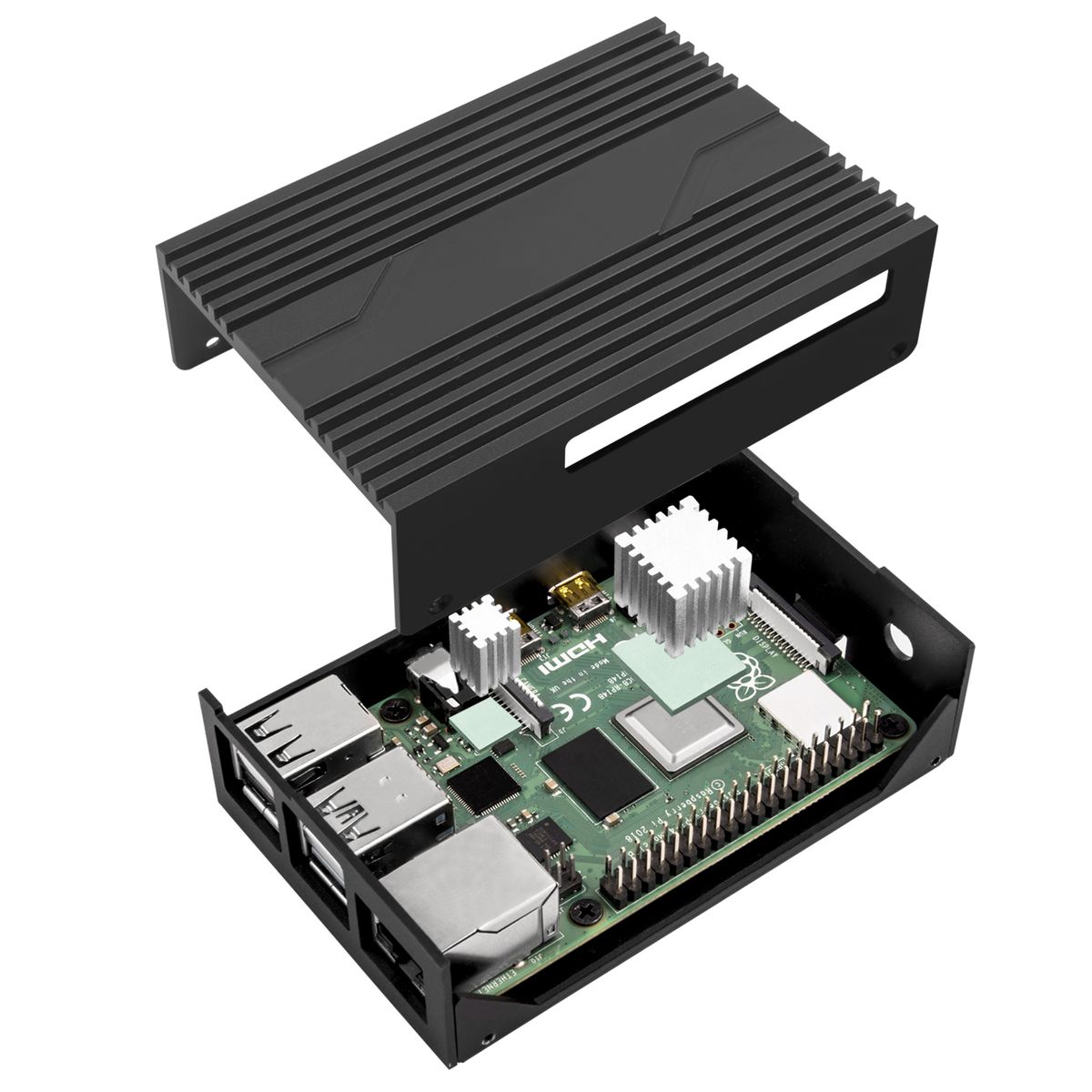

Now click the “Start Stress” button to start Stress. Note the low CPU Load at 1 % and the SoC temperature at 44.303 ☌ Here is a screenshot of the output of PiStats before starting Stress: (no need to reload the website – it will appear by itself, if the Pi is online and the PiCockpit frontend has a connection). In PiControl, a new panel with User commands should now appear: Tip: you can see a list of all available icons here (Material Design Icons). Please refer to this screenshot for how the text should look like:
RASPBERRY PI 4 CPU TEMP MONITOR CODE
Note: Unfortunately WordPress messes up code formatting and characters. “description”: “Puts stress on the Pi CPU to heat it up”, “description”: “User commands for demo of PiControl”, Sudo nano /etc/picockpit-client/apps/com.picockpit/picontrol/modules/user.jsonĮnter the following configuration into the new file:

You will need the command line for this one. Create a button to launch stress on the Pi on-demand had undervoltage since last boot) – you can see both in this view. is currently in under voltage), or has been out of spec in the past (e.g. There are two different deviations from this: currently out of spec (e.g. This is the view you would like to see – the system stays within the temperature limits, there is no throttling – your Pi operates optimally. Scroll down to see the throttling & under-voltage view: I also recommend you to use the PiDoctor’s System module, on auto-reload to monitor temperature limit, frequency cap and throttling events. The temperature will be updated every second. This will narrow the display down to just the SoC temperature. Simply click on PiStats, and enter temp into the search: In this write-up, we have discussed different methods to find out the temperature of the board of the Raspberry Pi 4.Using the new PiCockpit v2.0 release, you can monitor the current SoC temperature of the Pi in an easy to use webinterface (in PiStats). There are different methods to find out the temperature of the board of the Raspberry Pi 4. The temperature of the CPU rises with the excessive use of the Raspberry Pi 4 which can damage the board. The temperature of the Raspberry Pi 4 is displaying on the top of the menu bar as highlighted in the figure below: Once the position is set, click on the “Close” button: Set its position on the menu bar, as we want to set it between the Spacer and Digital Clock, we will place it in between by using the “Up” button: We can also use the graphical user interface to monitor the temperature and can set it on the top menu bar so it will continuously display the temperature of the Raspberry Pi 4, for this purpose, we will right-click from the mouse on the top menu bar of the desktop of Raspberry Pi, a drag-down menu will appear, choose the “Add/Remove Panel Items…”:Ī window will appear, click on the “Add” button:įind out the “Temperature Monitor” and click on the “Add” button to add it on the title bar of the desktop:
RASPBERRY PI 4 CPU TEMP MONITOR HOW TO
How to monitor the temperature of the Raspberry Pi by using a GUI If we want to display the temperature of the Raspberry Pi through the bash command, we will display the “/sys/class/thermal/thermal_zone0/temp” where the temperature of the Raspberry Pi 4 has been stored, for this purpose, we will use the command: How to monitor the temperature of the Raspberry Pi by using a bash command The output of the above Python script to monitor the temperature can be checked by running the python code using the command: $ python temp.py Finally using the print command, we have printed both values on the screen. Then use the round() function to round off the store value of the temp variable and store it in the round_temp variable. #printed the values of temp and round_temp variablesĮxplanation of code: In the above code, we have to import the library of the gpiozero and then find out the CPU temperature and store the value in the “temp” variable. Print ( "Temperature's value rounded to one decimal:" ) Print ( "The temperature of Raspberry Pi:" ) #round the value of temperature to one decimal #save the value of temperature of Raspberry Pi in "temp" variable


 0 kommentar(er)
0 kommentar(er)
